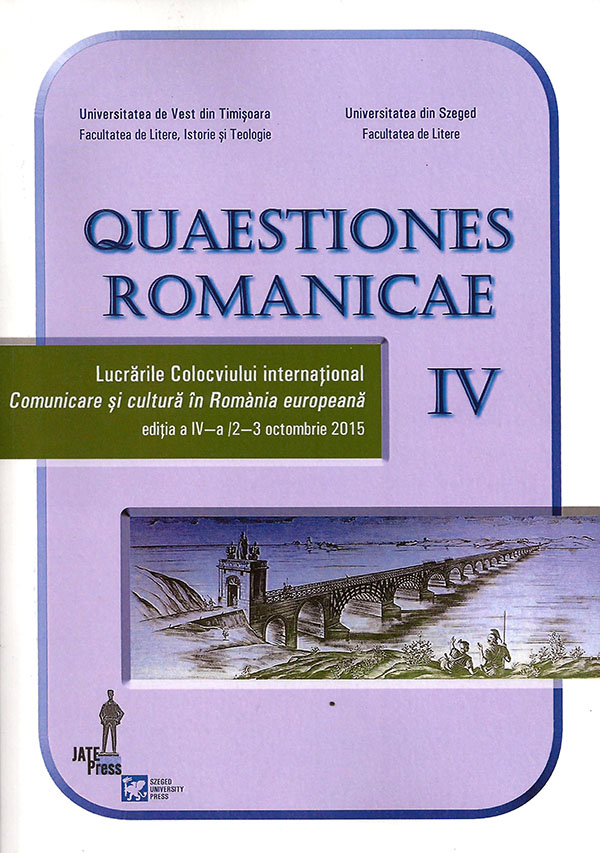Inestabilidad léxica en el paradigma románico del ser humano – un enfoque diacrónico
Abstract: (Lexical instability in the romance paradigm of human being – a diachronic approach) In this study we will see the destiny of the Latin paradigm homo-vir-mulier in five romance languages (Romanian, Italian, French, Spanish and Portuguese). Although the signifier homo is panromance, its signifier has changed a lot in the romance languages, where we register a generic signified very reduced as occurrence and only found in certain contexts (with some supplementary differences for Romanian). As for the specific terms, the signifier vir has completely disappeared, while homo has occupied its place, without abandoning completely its hiperonimic position, invaded by lat. persona. In Romanian, Spanish and Portuguese, there is a specific term besides the heir of homo, but with important differences between the three languages. There have been a lot of changes concerning the signifier mulier in the course of the history. At first panromance, the term is part of the triadic structure nowadays only in Spanish and Portuguese, while the other languages use other terms, each ne with his own history.This study aims not only an onomasiological approach (What has happened with the signifiers homo-vir-mulier, if they survived?), but also a semasiological one (What forms we use nowadays for the three spots of the initial triadic structure? ¿The paradigm has managed to attract some other terms that initially weren’t part of this structure?)
Keywords: Lexical instability, homo-vir-mulier, generic, specific, romances languages.
Resumen: En este estudio se intentará ver la suerte del paradigma latino homo-vir-mulier en 5 lenguas romances (rumano, italiano, francés, español y portugués). Aunque el significante homo es panrománico, su significado ha cambiado notablemente en las lenguas romances, donde registramos un significado genérico reducido numéricamente y restringido a ciertos contextos (con ciertas matizaciones suplementarias para el rumano). En el caso de los términos específicos, el significante vir ha desaparecido por completo y en su lugar ha pasado homo, sin abandonar por completo su posición hiperonímica, invadida a su vez por el lat. persona. En rumano, español y portugués hay un término específico al lado del heredero de homo, pero con notables diferencias de uso entre las tres lenguas. Por lo que se refiere al significante mulier, ha habido muchos cambios a lo largo de la historia. Inicialmente, panrománico solo queda como término de la triada en español y portugués, mientras que las demás lenguas han recurrido a diversos otros términos, cada uno con su historia propia. Este estudio se propone tanto un enfoque onomasiológico (¿Qué ha ocurrido con los significantes homo-vir-mulier, si es que han sobrevivido?) como semasiológico (¿Qué formas ocupan hoy en día los tres lugares de la estructura tríadica inicial? ¿El paradigma ha atraído otros términos que inicialmente no formaban parte de la estructura?).
Palabras clave: inestabilidad léxica, homo-vir-mulier, genérico, específico, lenguas romances.
